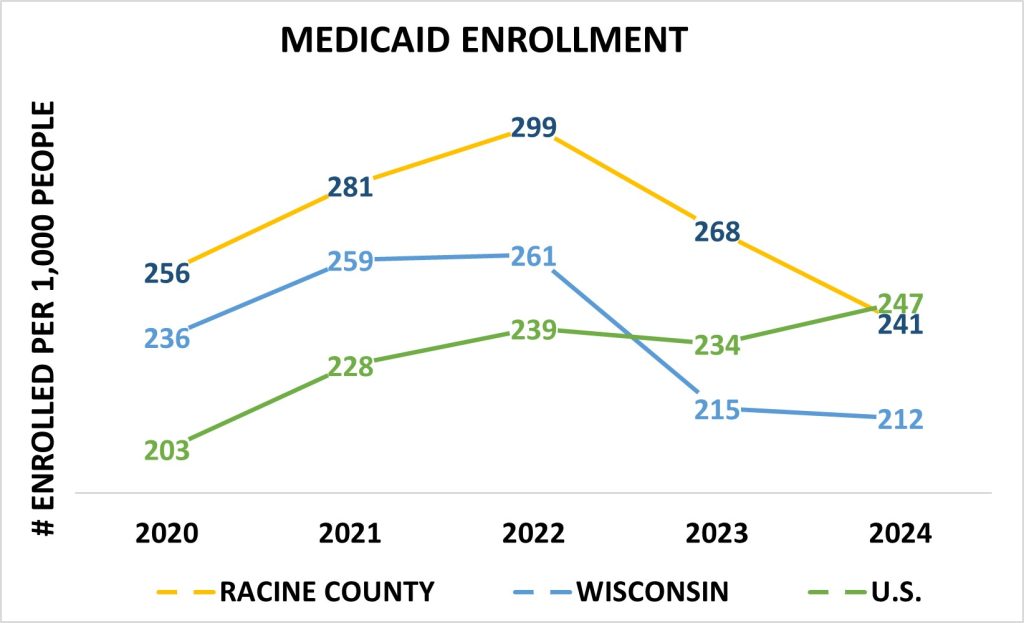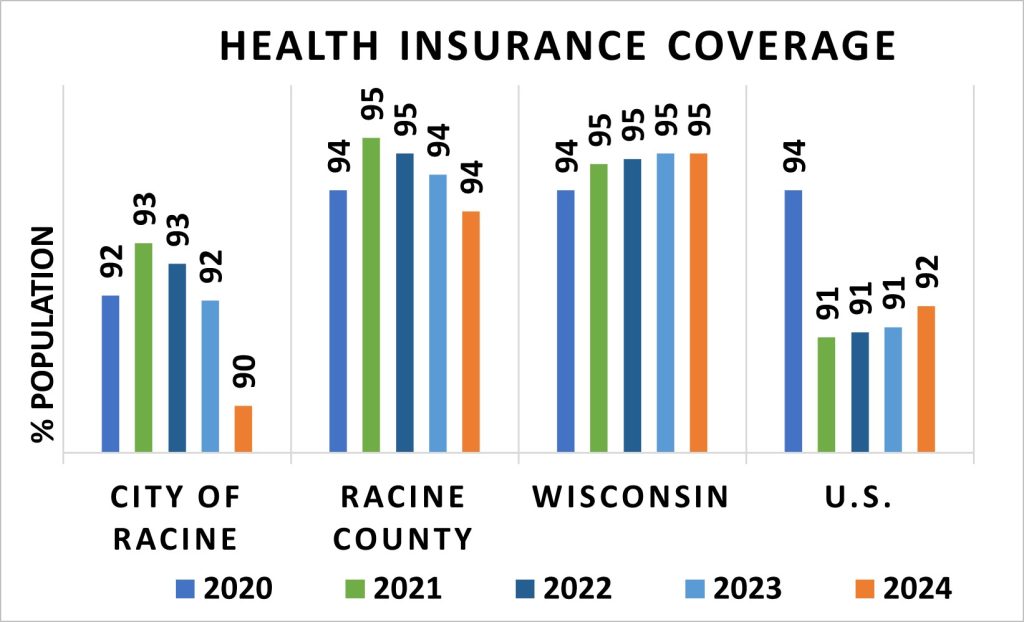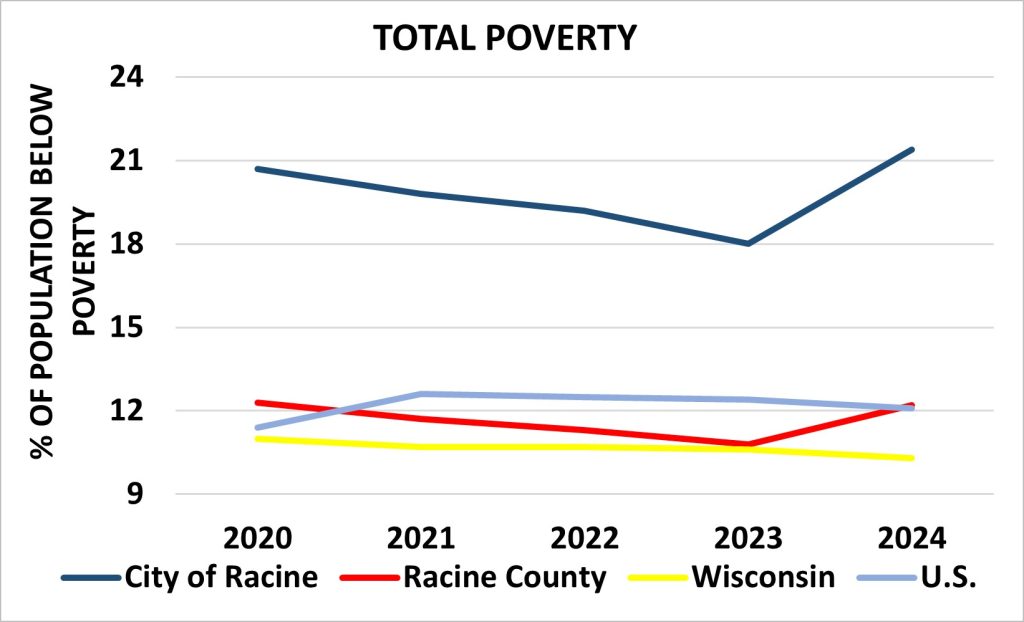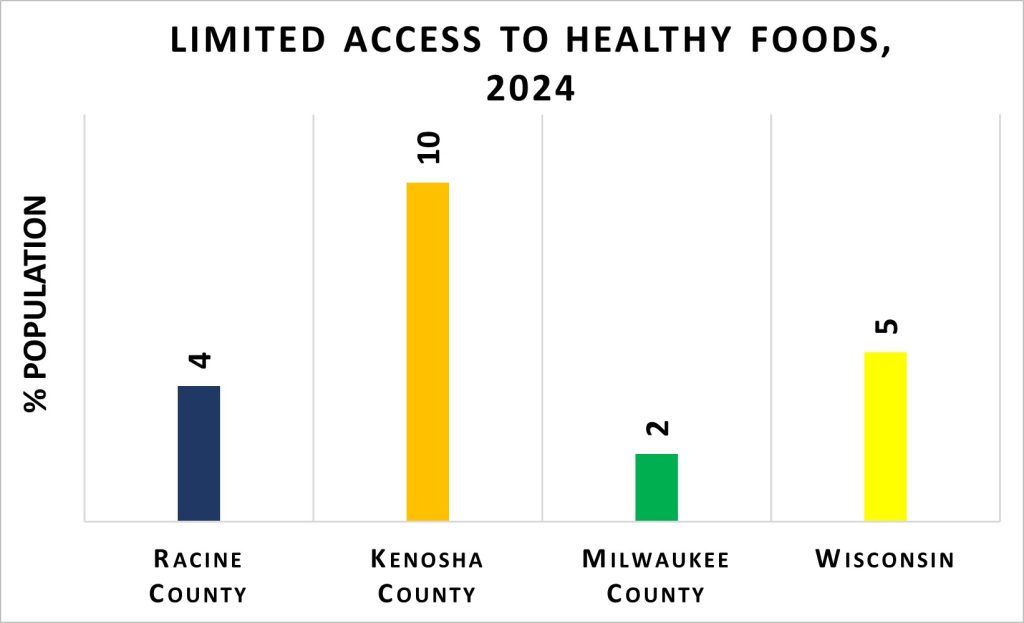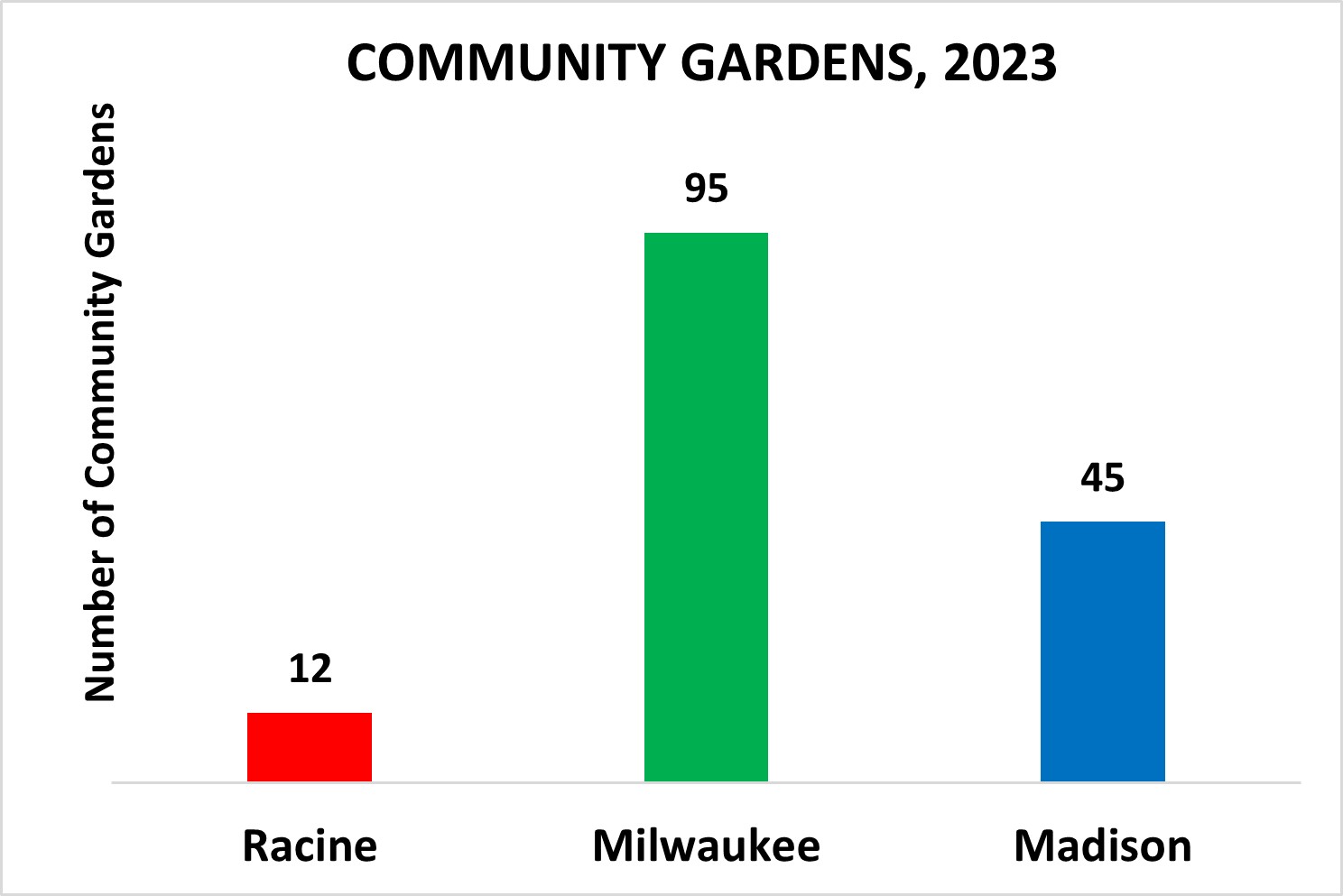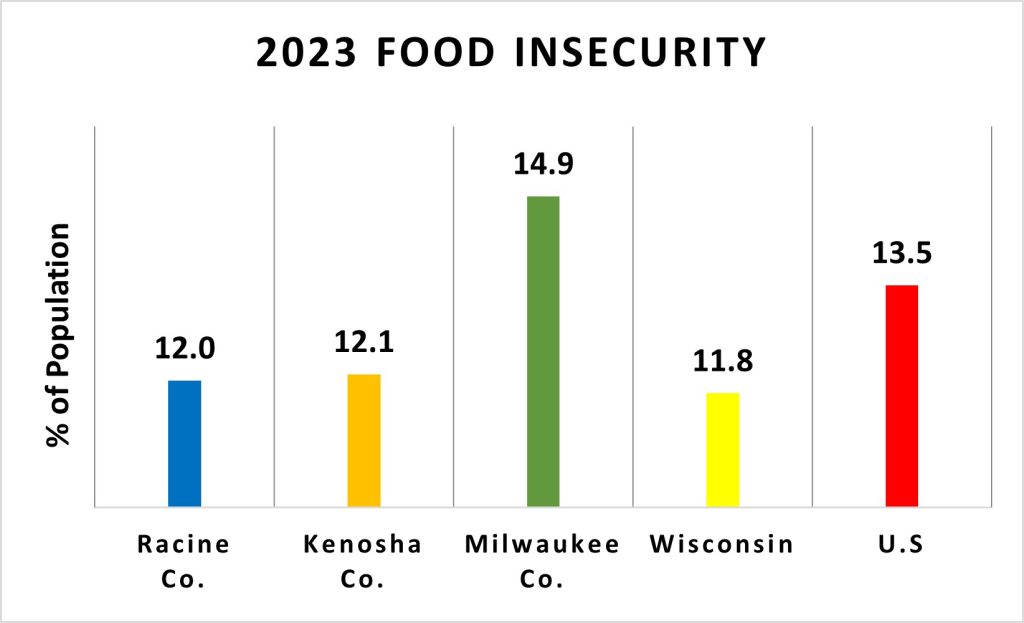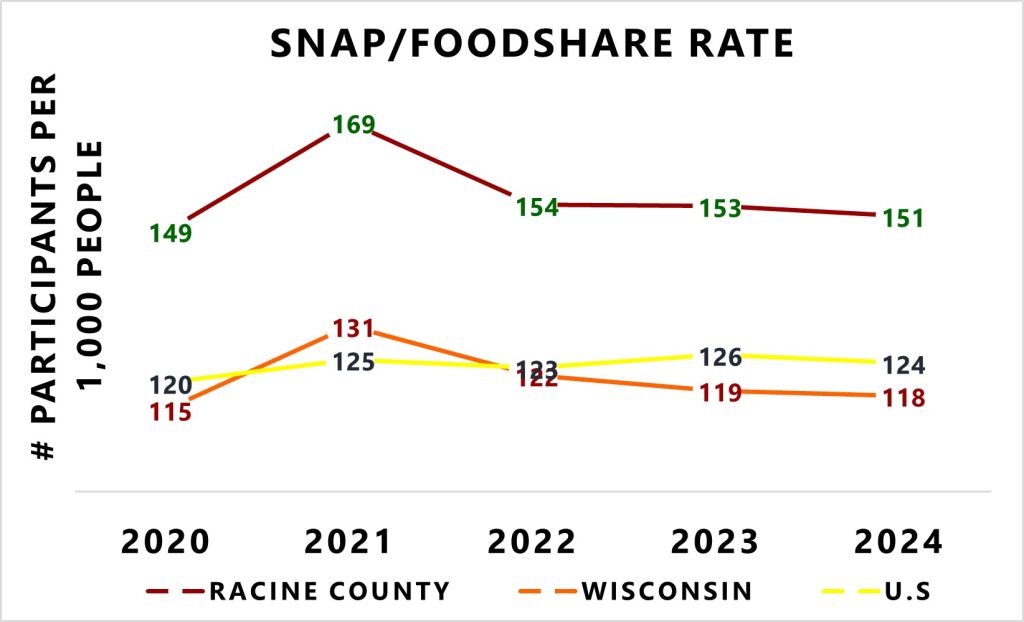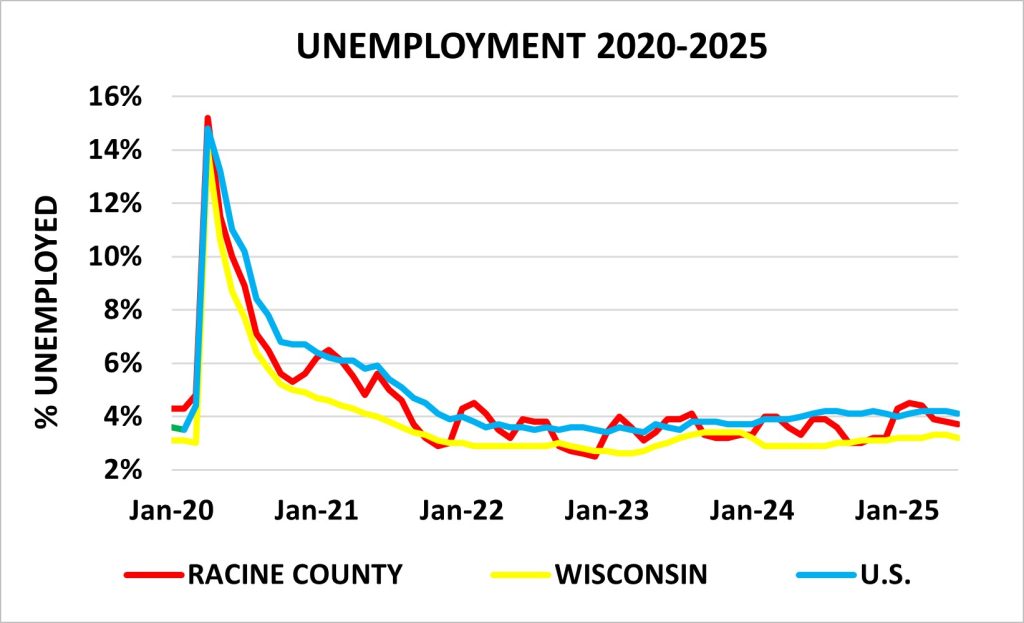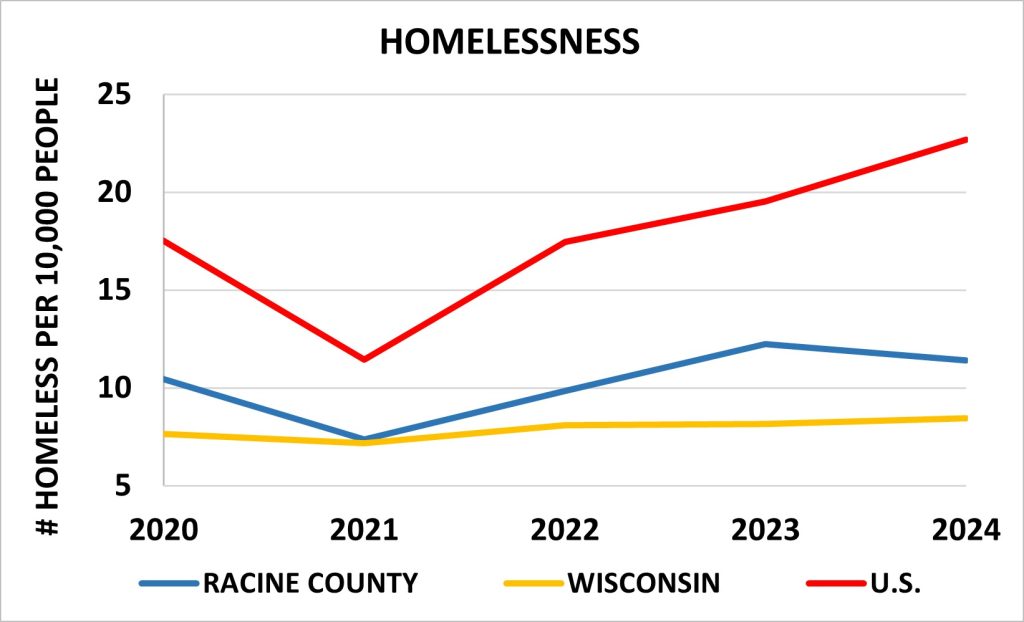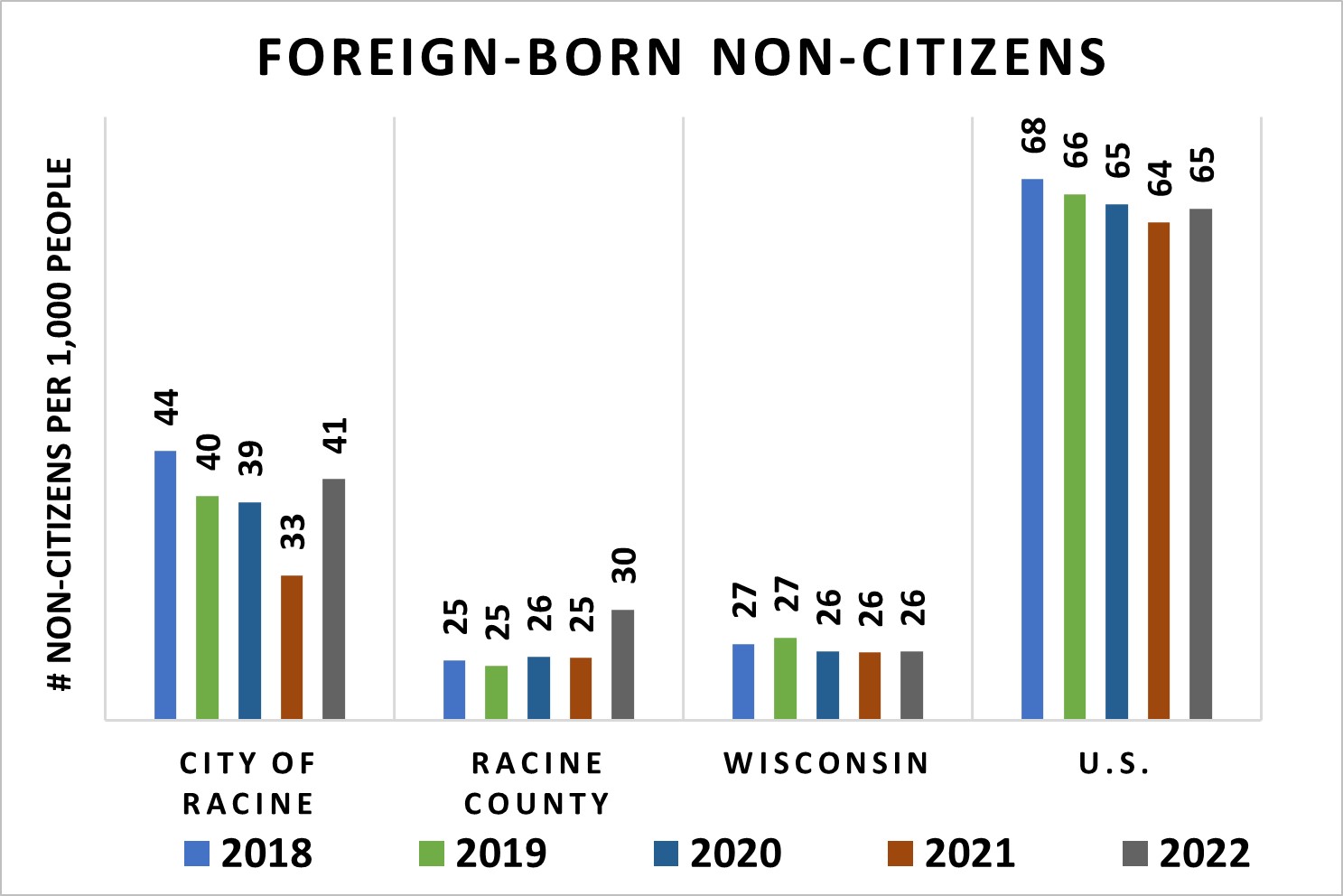Choose Services
Economic Indicators
Racine Economic Growth
Racine’s economic success is the result of hard-working, talented people who are dedicated to creating a dynamic community. Lack of quality, affordable housing and well-paying jobs can hamper the City’s ability to attract new business and grow. Identifying opportunities to improve Racine’s job and housing situations can lead to a strong local economy that is able to withstand downturns. This section contains information about factors affecting Racine’s economy.
Access to Healthcare
Medicaid Enrollment
Racine County has a higher rate of individuals enrolled in Medicaid compared to the state of Wisconsin and the United States. From the years 2020 to 2022, enrollment in all regions increased and then in year 2024 drastically decreased for all regions except for the United States.
Sources:
Medicare Enrollment
Racine County has a higher rate among the State of Wisconsin and the United States in people enrolled in Medicare. Between 2020 and 2024, there is a gradual increase in rates for the Racine County, State of WI and U.S. However, the U.S overall still increases but has a much lower rate compared to Wisconsin and Racine County.
Source:
Health Insurance Coverage
In 2024, the City of Racine had approximately 90% of it’s residents covered by health insurance. Overall, the City of Racine is coverage is lower than Racine County, the State of Wisconsin and at a national level. The general trend in most regions between 2020 and 2024 shows either plateauing or increasing in health care coverage for it’s recipients.
Sources:
Residents Living in Poverty
Poverty Levels
Poverty level according to the U.S. Census Bureau, are dependent on income and family size. The City of Racine has had a significantly higher percentage of the total population living in poverty compared to Racine County, the State of Wisconsin and the U.S but general trend shows a decreasing rate in all regions. However, in 2024, the City of Racine and Racine County increased compared to its other counterparts.
Source:
Nutrition
Limited Access To Healthy Foods
Racine County has a lower percentage of people with limited access to healthy foods than Kenosha and the State of Wisconsin, with only Milwaukee County having lower access. Having limited access to healthy foods means an individual is both living in poverty and does not live within one mile of a grocery store.
Source:
Community Gardens
City of Racine has the least amount of community gardens available out of the Madison and Milwaukee. However, both of these cities have much larger populations, making the number of community gardens per resident much closer and on par.
Source:
Food Insecurity
Food insecurity is defined as limited or uncertain access to affordable and nutritious food in sufficient quantity. This includes people who may not have the money to purchase food regularly and those who must decide to buy food or pay other expenses. In 2023, 12% of Racine County residents experienced food insecurity, which is comparable to Kenosha County and the State of Wisconsin.
Sources:
Supplemental Nutrition Assistance Program (SNAP, FoodShare) Enrollment
Foodshare Rate
The FoodShare (Wisconsin’s SNAP program) enrollment rate in Racine County has consistently been higher than both the State of Wisconsin and the United States. Starting from 2022, Racine County has stayed at a steady level.
Sources:
Unemployment
Rates
The unemployment rate is approximately back to where it was pre-pandemic at nearly all levels with the county remaining the higher than the state of Wisconsin but lower than the United States.
Source:
Housing
Substandard Housing
The City of Racine has a smaller percentage of substandard housing compared to the State of Wisconsin and the United States. This means that almost every home in the City has appropriate plumbing and kitchen facilities.
Source:
Homelessness
Homeless Rates
Homelessness rates in Racine County, the State of Wisconsin, and the United States dropped significantly in 2021 but have since begun to rise. Over the past five years, however, Wisconsin has experienced only minimal changes in its homelessness rate, showing relatively stable trends with few fluctuations.
Source:
Foreign-Born Non-Citizens
Non-Citizen Demographics
The rate of foreign-born non-citizens is higher in the City of Racine than in both Racine County and the State of Wisconsin, but is lower than the Unites States. The rates in all locations have remained relatively steady.
Sources:




